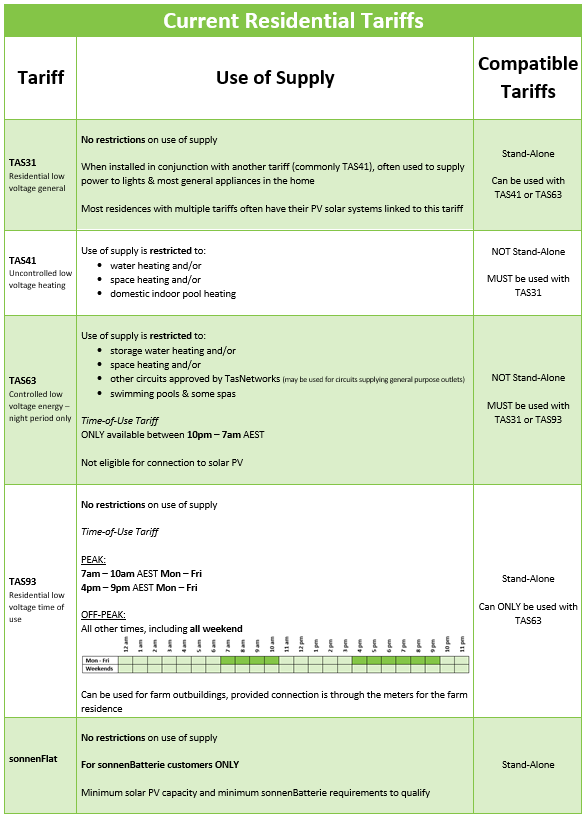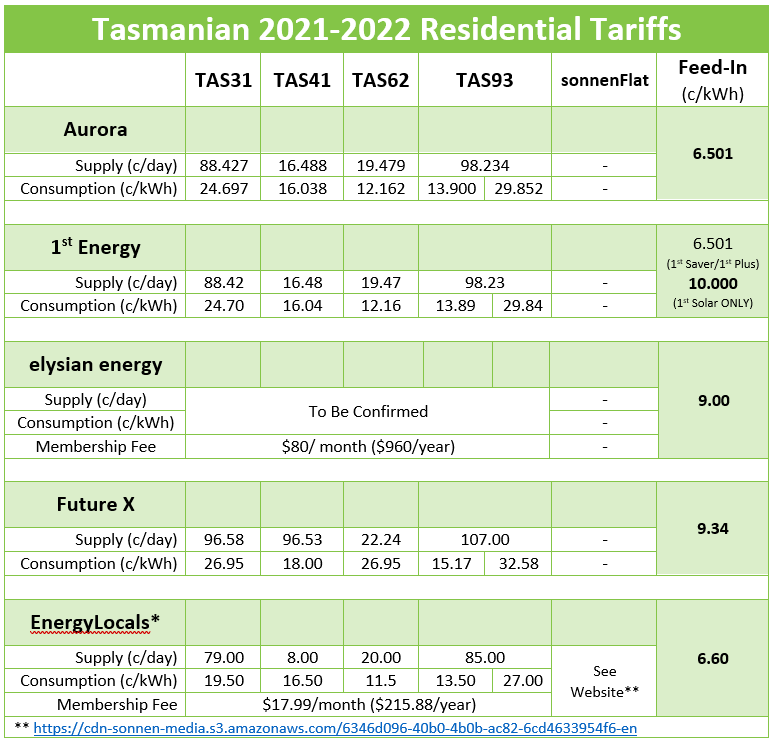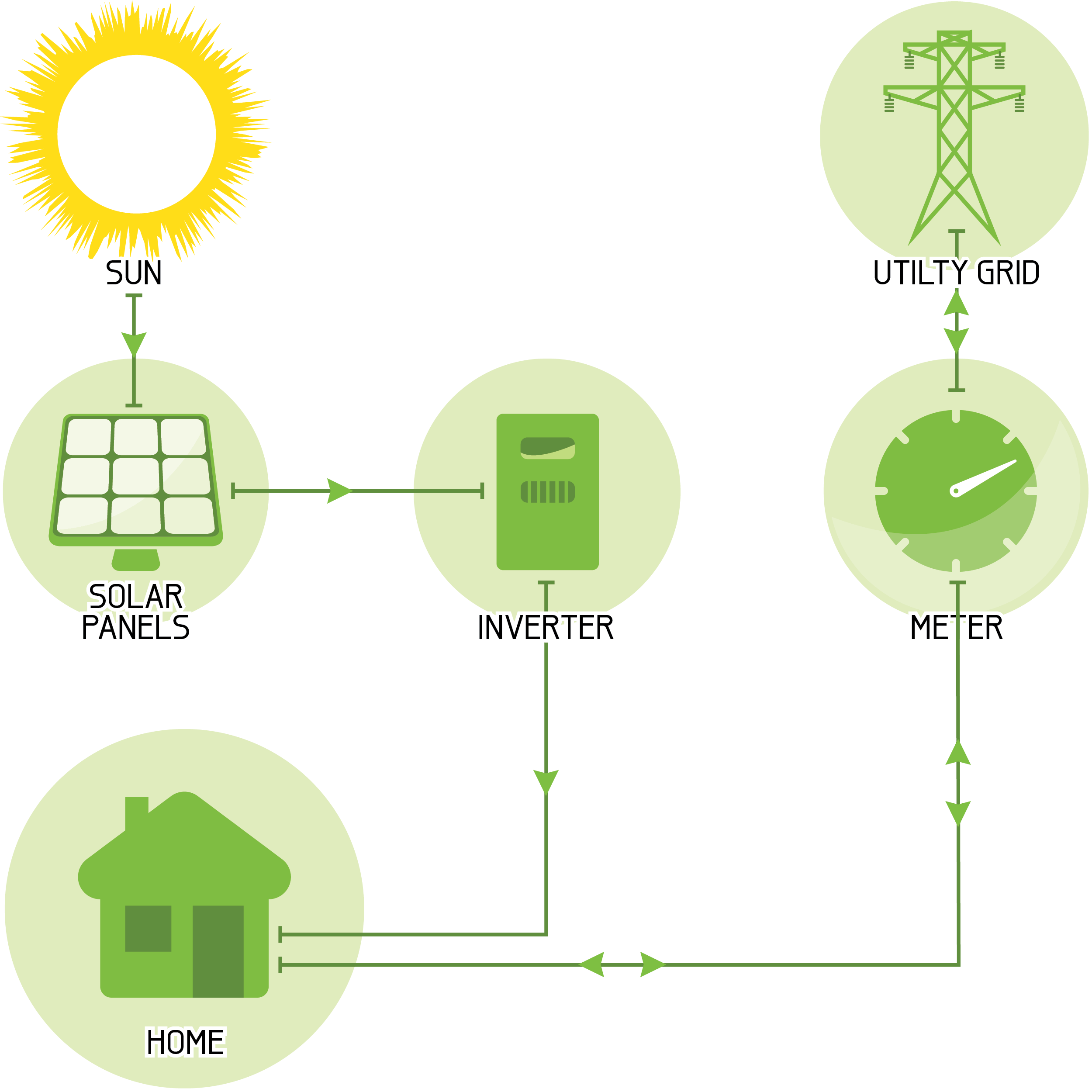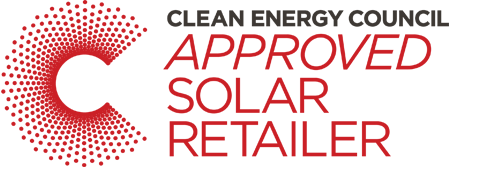Tasmanian Energy Tariffs
TasNetworks sets defined pricing structures – ‘tariffs’ – for selling electricity, based on the end user, expected energy demand, and anticipated costs of servicing.
Published tariffs form the basis of final costs charged by your Energy Retailer, who add their administrative charges and costs to the published tariff prices.
In Tasmania the Tasmanian Economic Regulator sets the maximum price that can be charged by a retailer for electricity.
Current Residential Tariffs
Residential Tariffs are designated as “low voltage installations located a premises used wholly or principally as private residential dwellings”.
For further information on sonnenFlat, please contact us directly, or refer to our news article on sonnenFlat.
Tasmanian Electrical Retailers
There are currently 4 individual approved Electricity Retailers operating in Tasmania:
- Aurora
- 1st Energy
- Elysian Energy
- FutureX
- Energy Locals
EnergyLocals also deliver sonnen eServices such as sonnenFlat and sonnenConnect.
Although finer details of electricity plans vary, the basic charges of all these retailers tends to be very similar (around the maximum amount legislated by the Tasmanian Economic Regulator). Tariff pricing is reviewed each financial year.
Residential Tariffs & Solar PV
In Tasmania, the benefit customers can receive from solar systems may be curtailed by the fact that a solar system with a single inverter may only be linked to ONE Tariff (commonly Tariff 31).
This means that surplus power not used by a designated Tariff is exported back to the grid, where it is sold to your electricity retailer at a relatively low rate. Power must then be re-purchased to supply other Tariff/s on the same residence, even when solar systems technically generate sufficient energy to meet all residential power needs.
If you’re looking at installing solar PV, it’s worth considering whether Tariff 93 may work for you.
Despite real advantages from well-managed power consumption under this Tariff, consideration should be given to heating, hot-water, or any other device which would draw on substantial amounts of energy.
For those with adequate Battery storage, Tariff 93 definitely offers significant benefits.
Batteries could be charged either from a solar array or the grid during off-peak times to ensure sufficient energy is available to power a residence during Peak times, allowing significant savings on grid-sourced energy consumption.
For information on our battery storage options go to Solar Power Hybrid on our website and check out our Tesla Powerwall battery storage solutions.
For more information on Tasmania’s Tariff and renewable energy situation visit the Tasmanian Renewable Energy Association.
Tasmanian Solar Feed-In Tariffs
To reduce the financial and environmental cost of power, power consumption may be offset by installing residential solar PV (photo-volatic) or some other renewable energy system.
This enables individuals or companies to generate power for their own consumption, and to export surplus power back to the grid.
Surplus power is currently purchased by your chosen Electricity Retailer at a rate determined by the Customers’ Feed-in Tariff.
The Feed-In Tariff is an agreed amount paid by an Electricity Retailer for power exported from your renewable energy system to the grid.
See How does solar power feed back into the grid? for further detail on how this works.
The Tasmanian Economic Regulator sets the minimum feed-in tariff that can be paid for power exported to the grid. This rate is reviewed each financial year.
In contrast to tariffs dealing with supply of power from the grid, there is no clear pattern in what this rate may be from year to year, and may go either up or down.
There is also more variation in what energy retailers may offer as a feed-in rate. If you’re looking at installing solar, it would be worth comparing current feed-in rates available from the different retailers.


















